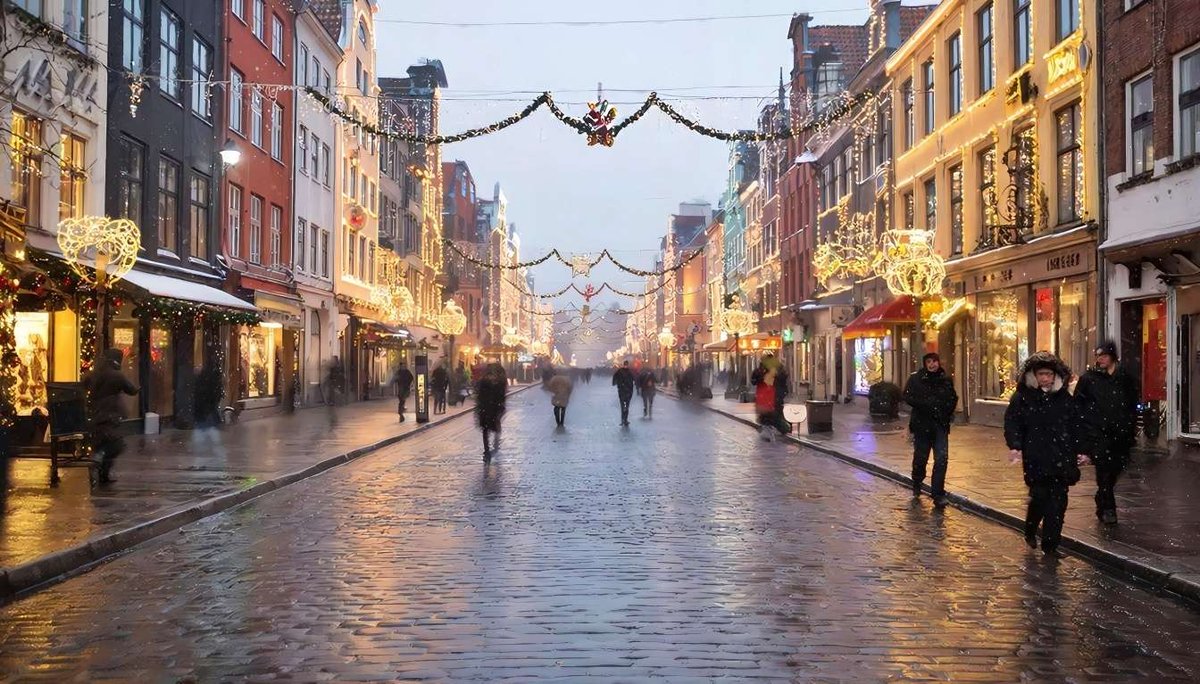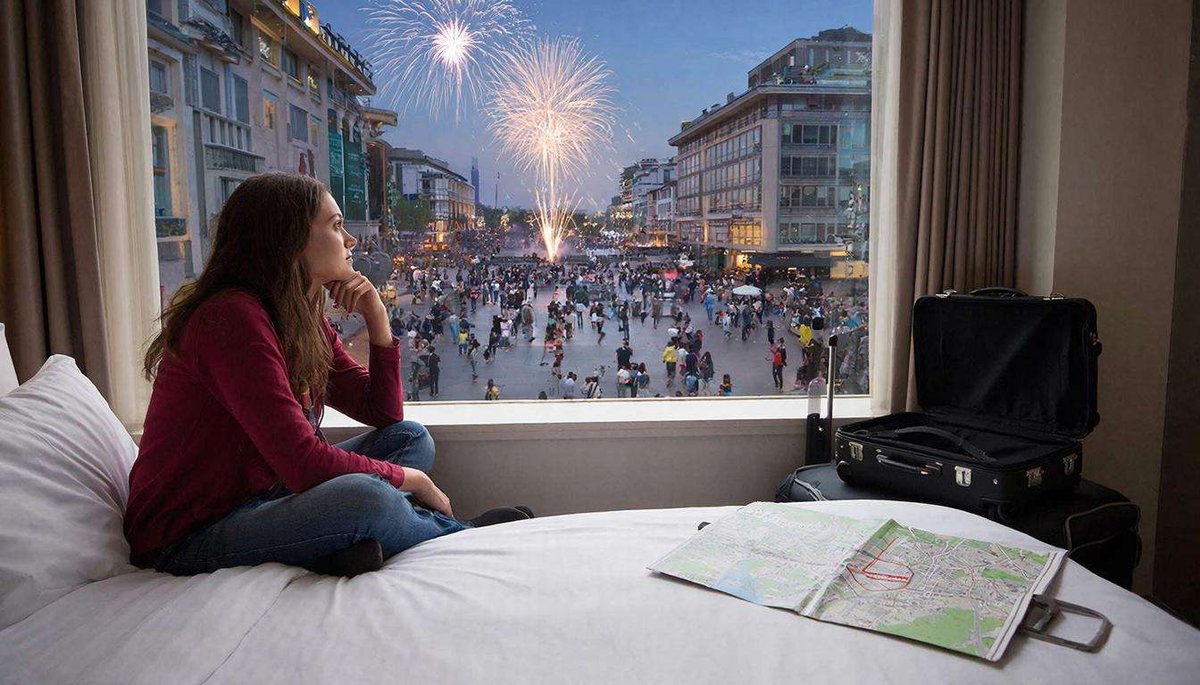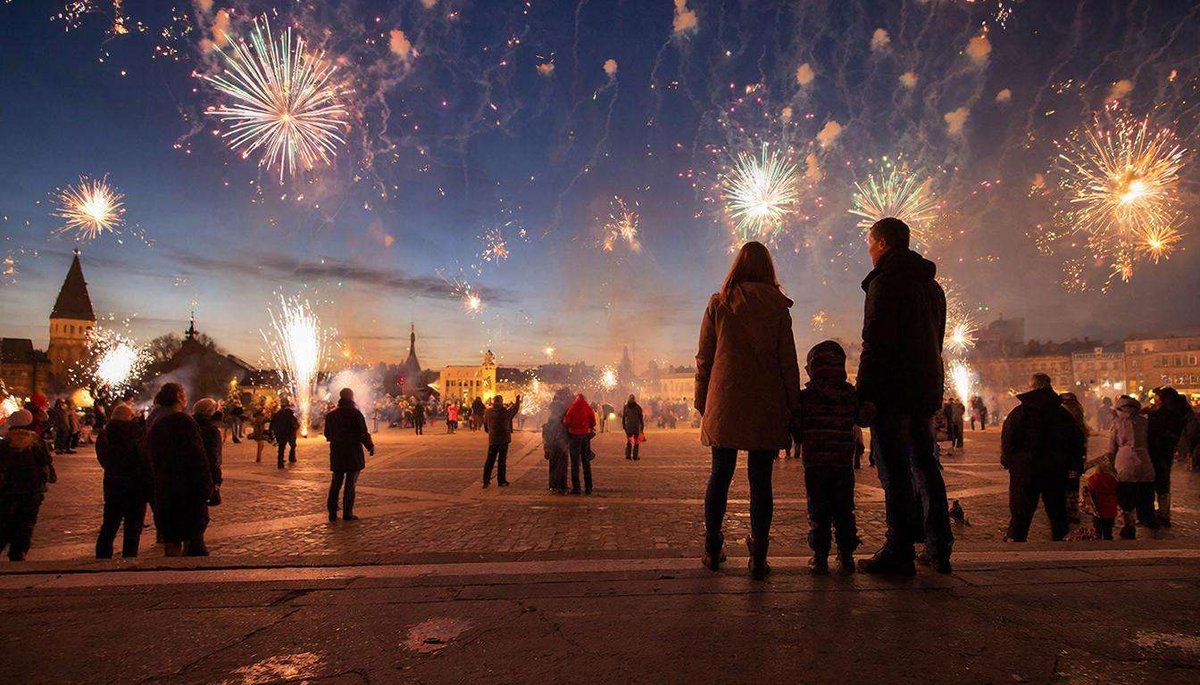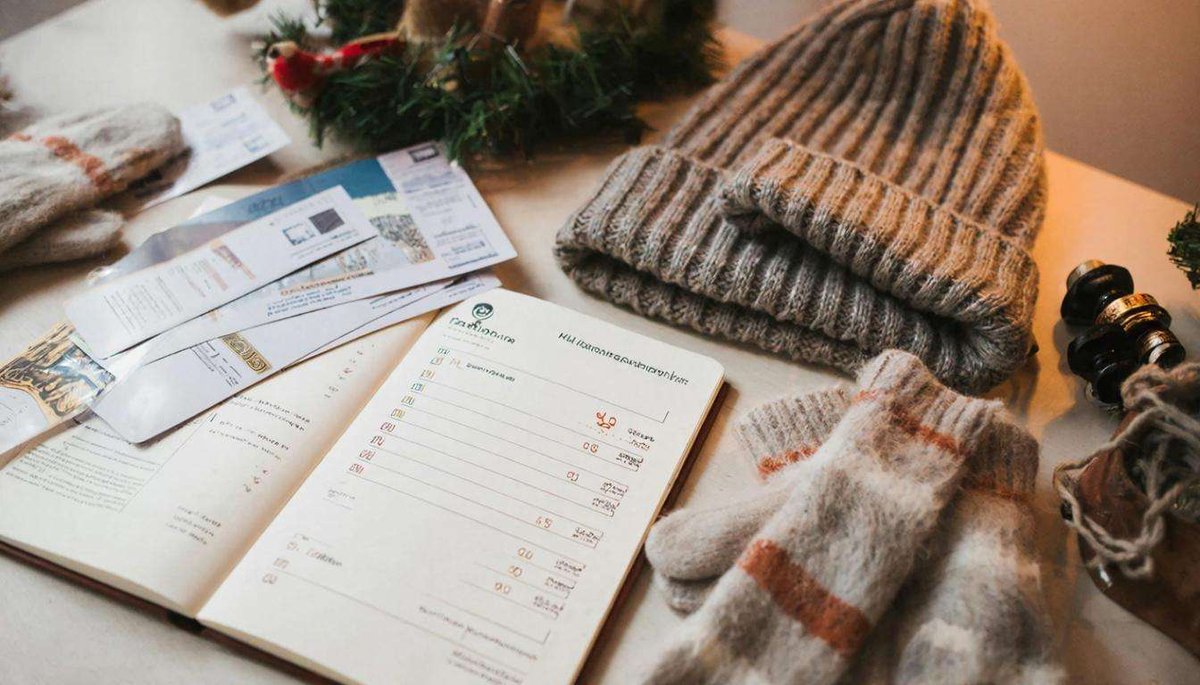⚠️ Beginner mistakes: late bookings, underestimating the wind and transport expectations
Christmas and New Year in Denmark look perfect in pictures: lights, hygge, markets, quiet streets and fireworks over the old town. But behind this picture lies a very specific holiday reality: shop closure laws, family evenings, reduced transport schedules, and winter weather that is much harsher than the forecast suggests.

A typical rookie mistake: you arrive expecting ‘just like any other European capital’ and are met with closed doors on 24-26 December, half-empty streets on Christmas Eve, expensive taxis instead of trains, and wet trainers instead of a walk along the waterfront.
🎯 The purpose of this article is to identify the key risks and turn them into a clear checklist: when to book, where to stay, how to dress, and what to expect in terms of transport and fireworks, so that Christmas and New Year in Denmark are a comfortable experience rather than a stressful one.
📅 Mistake #1: Late bookings and playing with ‘red dates’

🎒 Why 24–26 December and 31 December–1 January are special
In Denmark, Christmas and New Year are not just ‘dates on the calendar,’ but days when the country really slows down:
- 24 December (Juleaften) is the main family evening, with everything winding down by the afternoon;
- 25 and 26 December are official holidays, with most shops and some museums closed or operating on a greatly reduced schedule;
- 1 January is formally ‘just’ a day off, but in reality, the city wakes up very slowly.
If accommodation, restaurants and key activities are not booked in advance for these dates, 🎫 the chances of being left ‘without options’ increase rapidly.
🧨 What newcomers do wrong
Typical scenarios for failure:
- booking a hotel and New Year's Eve dinner 1–2 weeks before the trip, when the good options are already taken;
- scheduling arrival in the evening of 24 or 31 December with the idea of ‘having dinner somewhere locally, it's a big city’;
- not checking whether their favourite museums/attractions are open on specific holidays.
✅ How to proceed in practice
- Accommodation: for Christmas and New Year, it is wise to book at least 1–2 months in advance, and even earlier for popular areas and dates.
- Restaurants and special dinners: all ‘special’ evenings (24th, 31st) — by reservation only; assuming that you will find a decent table on the spot is a risky strategy.
- Travel dates: if you want to combine atmosphere and a functioning city, the most comfortable window is after 26 December and until the 30th, or January with lower prices and fewer crowds.
📍 Mistake #2: choosing the wrong area — ‘too noisy’ or ‘too far away’

🏙️ The centre as the epicentre of fireworks and crowds
In Copenhagen, the central town hall square and adjacent streets turn into the centre of mass fireworks and celebrations on New Year's Eve. It's beautiful, but:
- it's very noisy until late at night;
- there are lots of people with fireworks in their hands;
- traffic is blocked or severely restricted.
If you book a hotel right in this ‘red zone’, don't expect a peaceful night's sleep, especially with children.
🌙 The opposite extreme — ‘somewhere on the outskirts’
Another type of mistake is to go too far from the centre for the sake of quiet and price:
- it is far to the nearest metro/train;
- on public holidays, bus schedules are reduced;
- late at night, you have to take an expensive taxi or walk in the wind and rain.
As a result, you save on accommodation — and lose time, energy and money on logistics.
🧭 Working principles for choosing an area
For the capital and large cities (Copenhagen, Aarhus, Odense), you can use a simple matrix:
| 🎯 Task | 📍 Where to stay | 👀 What to consider |
|---|---|---|
| 🎆 To be close to the events | City centre, but not directly on the main square | Noise on New Year’s Eve, book quiet rooms, inner courtyard |
| ⚖️ Balance of quiet and accessibility | Districts near a metro/station, 1–2 stops from the centre | Check night transport and travel time to key locations |
| 👨👩👧👦 Family stay | Calm neighbourhoods with metro and supermarket nearby | Travel time to the centre ≤ 20–25 minutes, safe evening routes |
💡 Basic rule: ‘close to the metro/train station, but not above the noisiest square’ — the best start to the winter holidays.
🌬️ Mistake #3: underestimating the wind, rain and short days

🧥 Why ‘forecast +4’ ≠ ‘feels like +4’
Winter in Denmark is not so much about sub-zero temperatures as it is about a combination of:0…+5 °C, humid air, strong winds near the water, drizzle, wet snow, and black ice.
❄️ The result: in a light city jacket, jeans and trainers, you will be freezing after 20-30 minutes on the waterfront or in the square. This is especially noticeable in Nyhavn, near the town hall, in the ports and at open-air Christmas markets.
👟 Typical failure scenario
- ‘We're only going to the fair for a couple of hours’ → ends up being 4–5 hours outside with rare breaks.
- No layers: cotton jumper, thin jacket, jeans, wet shoes.
- Result: wet feet, cold children, a spontaneous trip to buy expensive boots and a down jacket ‘on the spot’.
✅ Mini checklist for clothing
Layers: base layer: thermal underwear or thin wool; middle layer: warm jumper/fleece; top: jacket/parka with wind and moisture protection.
Bottom: warm trousers or trousers + thermal leggings; wool or thick socks.
Footwear: waterproof, with non-slip soles; above the ankle if possible; no trainers or ‘city’ boots with smooth soles.
🎯 Route plan: every 60-90 minutes, there should be a warm stop along the way — a café, museum, shopping centre, library. Otherwise, even the right equipment won't save you from hypothermia and fatigue.
🚉 Mistake #4: Believing that transport will be ‘like on a normal weekend’

🚌 What happens at Christmas
During the holidays, public transport in Denmark operates, but according to special schedules:
- On 25 and 26 December, most lines operate on a Sunday/holiday schedule with increased intervals;
- On the evening of 24 December, some bus routes and regional trains have gaps in their schedules, and late services may not run;
- Small towns and rural areas are particularly vulnerable — in the evening, transport may simply not run.
A common mistake is to plan your route based on the logic of ‘we'll get there somehow’ and rely on your experience of large cities.
🎆 What changes on New Year's Eve
On the night of 31 December–1 January:
- the Copenhagen metro runs 24 hours a day, but at longer intervals than during the day;
- there are night buses and trains, but the schedule is different from regular Fridays;
- after midnight, some routes run less frequently, and in some places there is simply no last train.
It is a mistake to plan a tight connection such as ‘watch the fireworks in the centre → at 00:45 take the train to another city’ without allowing for extra time.
✅ How to minimise risks
- Always check the timetable for the specific day, not for a ‘typical Sunday’.
- When planning:
- allow for an extra train/hour for train-plane and train-train connections;
- Avoid critically late arrivals on 24 and 31 December if you need another mode of transport.
- Use the official public transport app/website 📱 and check for changes on the day of travel, not just the day before.
🎇 Mistake #5: Expectations of fireworks — ‘picture postcard’ vs noisy reality

🧨 What New Year's Eve looks like in Denmark
New Year's Eve in Denmark is not a single centralised show, but a mixture of:
- crowds of people in central squares (in Copenhagen — at and around the town hall);
- chaotic private fireworks throughout the city, launched from streets, courtyards, and squares;
- loud noise until late at night, lots of rubbish, and smoke from pyrotechnics.
The picture can be very atmospheric, but for many it is a stressful environment, especially with children, animals, or people who are sensitive to noise. 🐾
👶 Common mistakes made by tourists
- taking small children to the very epicentre of the fireworks ‘for the experience’;
- expecting an ‘organised show’ where everything is safe and controlled;
- going out in light clothing/heels without thinking about a safe and quick way back.
✅ How to approach fireworks with a cool head
- If you don't like crowds and noise, you don't have to go to the main square — you can often get a good view from embankments, bridges, and areas slightly higher up.
- Think about your escape route: the nearest metro/train station, a quiet street from which you can quickly leave if you feel uncomfortable.
- Use hearing protection for children and sensitive adults, and don't stand next to people who are setting off fireworks right under your feet.
- For families, a comfortable scenario is to watch the fireworks from a reasonable distance, return to the hotel by metro/on foot, and not try to ‘be in the thick of things at all costs’.
✅ Quick checklist: how not to ruin your holidays in Denmark

Before buying tickets and making reservations, go over the key points again:
- 🗓️ Book in advance. Accommodation and restaurants on 24–25 and 31 December are only available with early booking.
- 📍Choose your neighbourhood wisely. Close to the metro/station, but not in the busiest square; for families — quiet neighbourhoods with quick access to the centre.
- 🌬️ Dress for wind and rain. Layers, waterproof shoes, hat, gloves; plan ‘street → indoors → street’.
- 🚉 Check transport specifically for the holidays. No tight connections, check schedules separately for 24–26 December and 31 December–1 January.
- 🎆 Be realistic about fireworks. They are beautiful, but noisy and chaotic; choose a comfortable scenario based on age, character and health.
If these five points are taken care of, Christmas and New Year in Denmark will give you exactly the experience you came here for: lights, hygge, the sea, the city — without feeling like you spent your entire holiday putting out other people's organisational fires.
❓FAQ
✅ Yes, for Christmas dates, accommodation and tables need to be booked at least a few weeks in advance, otherwise you will be left with a very limited choice and inflated prices.
✅ No, on these days, many places close early, transport runs less frequently, and without pre-planned logistics, there is a high probability of being left without dinner and convenient transport.
✅ Very seriously: at 0...+5 °C with wind and dampness, without layers and waterproof shoes, you will freeze in half an hour and ruin your day.
✅ Public transport runs, but on holiday and night schedules with long intervals, so be sure to check specific routes and allow extra time.
✅ Only if you are prepared for very noisy, dense crowds and have thought in advance about a quiet viewing spot and a quick way back.





0 comments
Log in to leave a comment